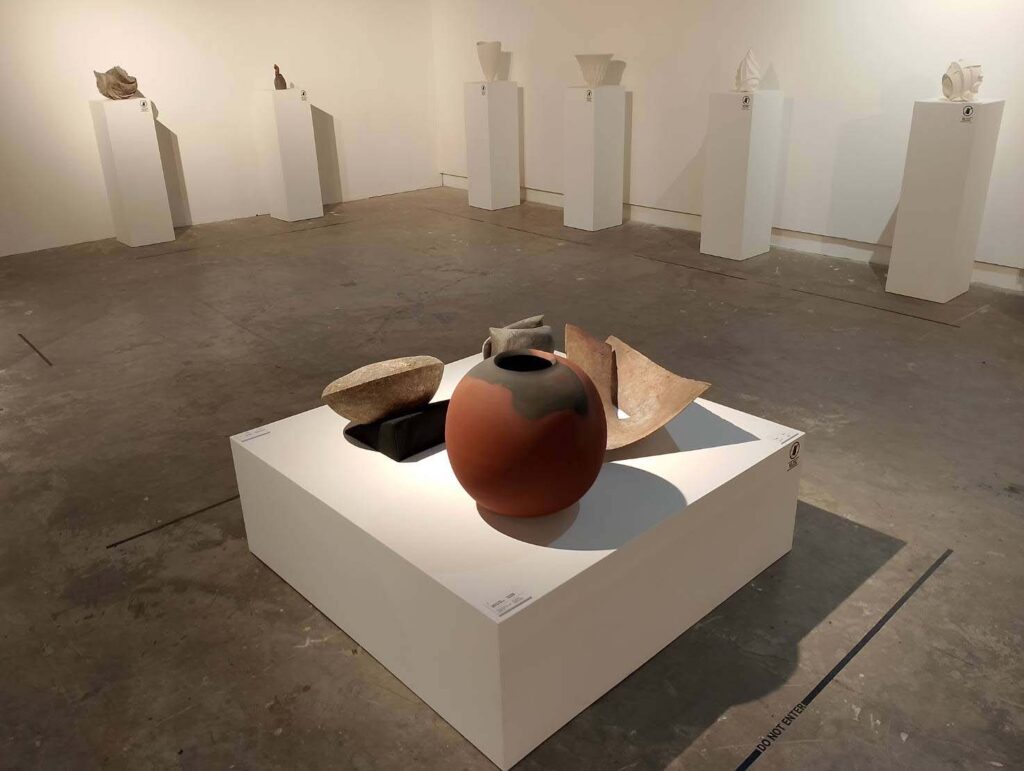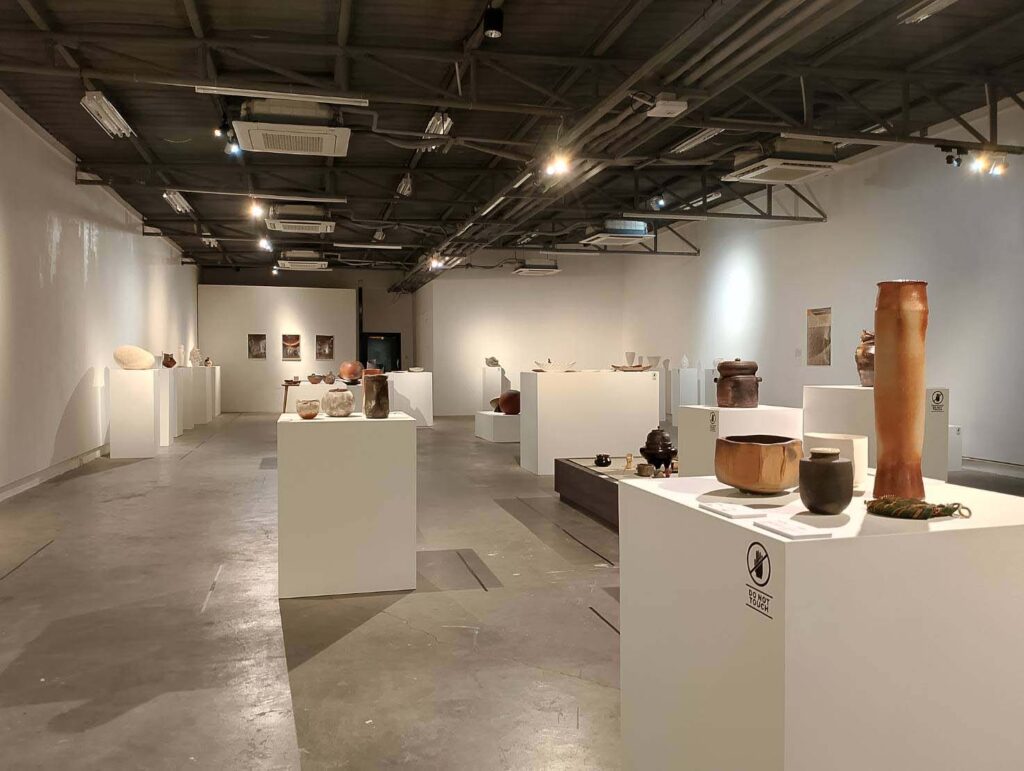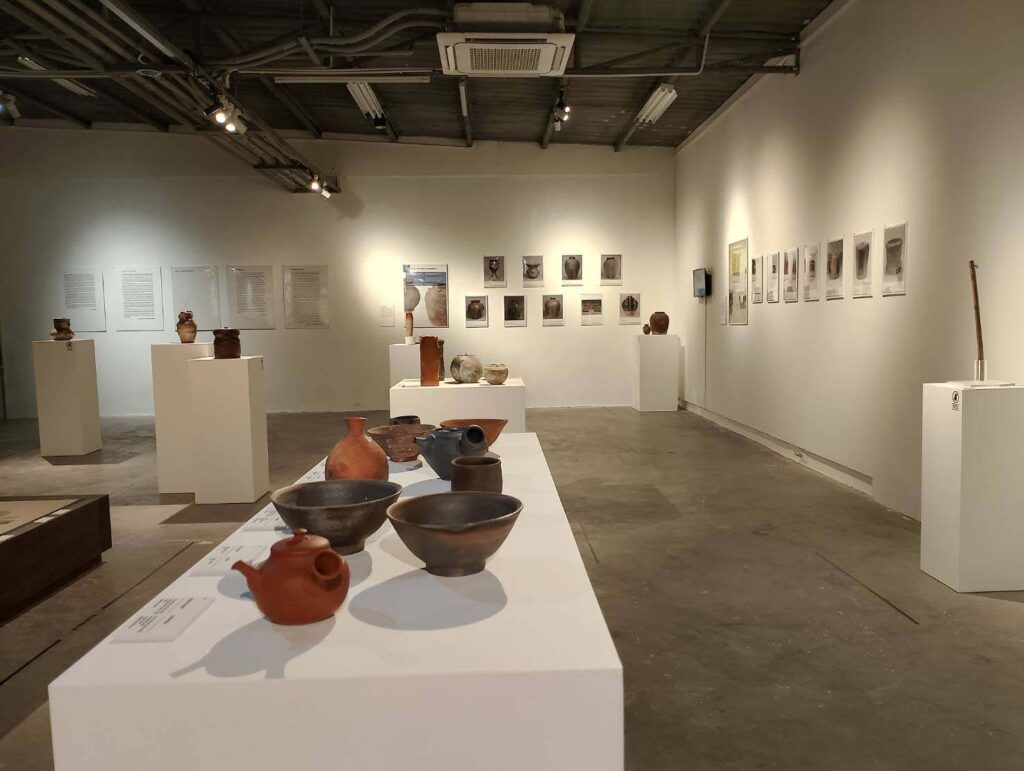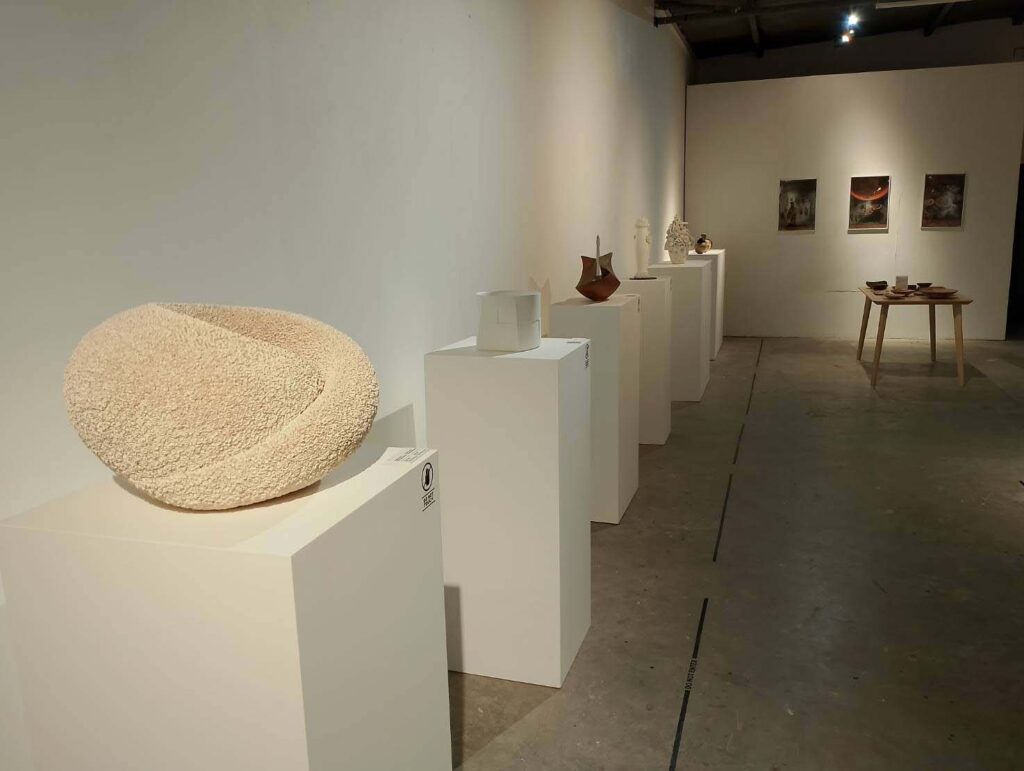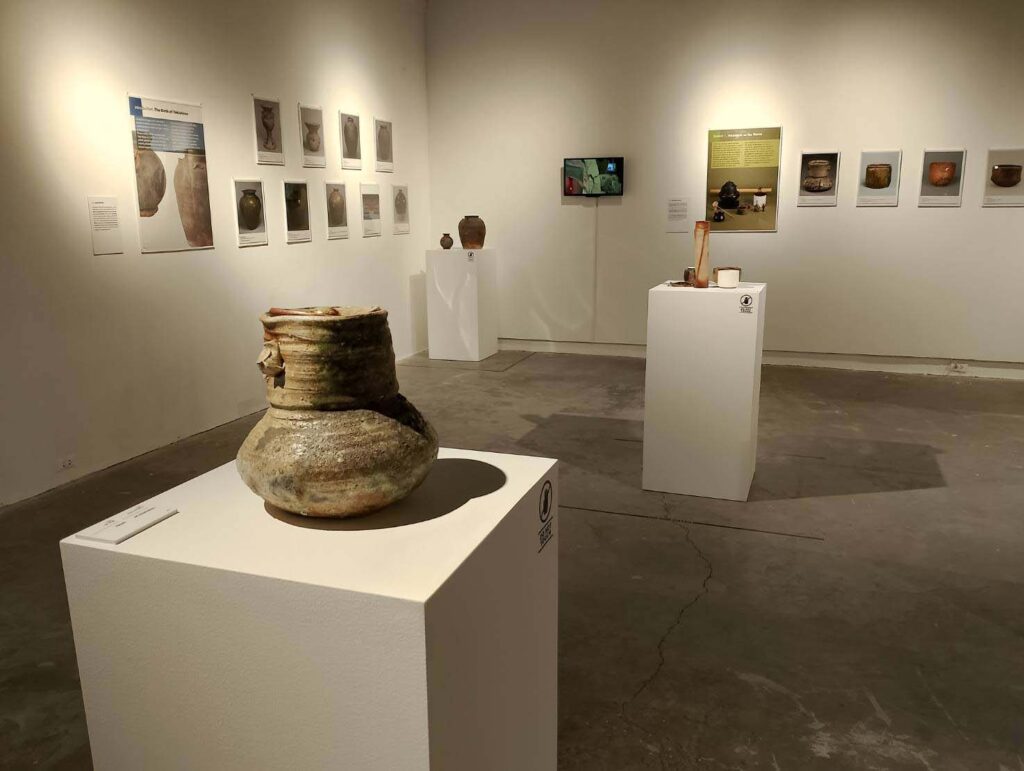Traveling Exhibition
Yakishime – Earth Metamorphosis

| BANGKOK | |
| [Duration] | Fri 25 August – Tue 26 September 2023 |
| [Admission number] | 1,221 people |
| [Venue] | Exhibition 5, 2fl. Ratchadamnoen Contemporary Art Center (RCAC) |
| KHON KAEN | |
| [Duration] | Sat 7 October – Sun 26 November 2023 |
| [Admission number] | 368 people |
| [Venue] | Faculty of Fine and Applied Arts Gallery (FAG), Khon Kaen University |

The Japan Foundation, Bangkok, in collaboration with the Ministry of Culture, Thailand and the Faculty of Fine and Applied Arts, Khon Kaen University were pleased to co-organize the traveling exhibition “Yakishime – Earth Metamorphosis.”
Curated by Iwai Mieko, from Panasonic Shiodome Museum, this exhibition showcased yakishime, the most primitive ceramic technique of firing unglazed wares at high tempertaure in Japan, and its development through times in various distinctive directions. This exhibition introduced the depth of Japanese culture by examining yakishime from the earliest examples to contemporary works.
Simply as it takes to form the clay and fire it when producing yakishime, however, this most basic method is apparently unique. Instead of applying glazes to decorate and make the waterproof surface, yakishime wares are fired at high tempertaure, approximately 1,200 -1,300 °C, so that the clay binds tightly together and vitrifies, becoming waterproof. The tradition of producing yakishime has continued unbroken from the past till the present. It is said that the earliest known yakishime wares date back to the fourth or fifth century but it was not until the twelfth through the seventeenth centuries that this technique became firmly established. Then, yakishime was prevalently utilized at major ceramic producing centers in Japan, including Bizen, Shigaraki and Tokoname.

Nowadays, ones might be familiar with the ceramic utensils used for tea ceremony and serving Japanese kaiseki meals or even ordinary Japanese food. However, did ones ever wonder why and how those ceramic vessels came into being and functioned in some cultural aspects of Japanese culture? The answers to the questions lay in this “Yakishime: Earth Metamorphosis” exhibition which more than 90 exhibits were on display. The exhibition was divided into the introduction and three main sections, including
Section 1: Yakishime as Tea Wares: Yakishime ceramics as everday wares in Japan underwent a major transformation and became an established category of tea wares since the Momoyama period.
Section 2: Washoku and Yakishime: Yakishime as utensils are used not only for serving Japanese food but being an integral part of the sensibility of washoku, Japanese cuisine.
Section 3: Yakishime as Objets d’art : Yakishime is moving in a new direction as objets d’art, free from utilitarian constraints while continuing to evolve as utensils used in everyday life and tea wares.
We hoped the exhibition would provide a great opportunity for visitors to visually experience the generous array of yakishime wares and also become tacitly aware of the depth and diversity of Japanese culture and gain insight into its creativity which had transcended beyond time.
Section 1: Yakishime as Tea Wares

Tea bowl, Bizen type
2014

Water jar with two handles, Bizen type
c. 1955

Covered Caddy, Tamba type
2015
Section 2: Washoku and Yakishime

Bowl and cups
2015
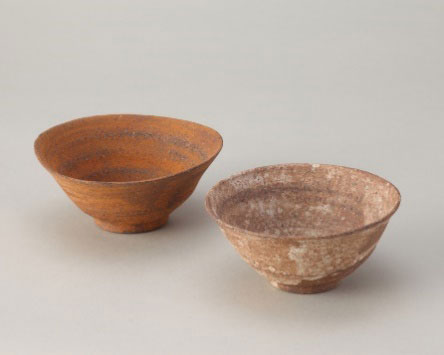
Rice bowls
2015
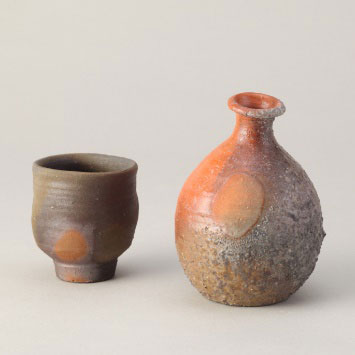
Sake cup and Sake flask with yohen klin effects, Bizen type
c. 1965-74
Section 3: Yakishime as Objets d’art

Large jar with yohen kiln effects, Mumyoi type
Unknown period

Incense Burner “Ryu Issei,” Bizen type
2014

Platter with yohen kiln effects, Shigaraki type
Unknown period
Co-organized by:

Supported by:

Photos of Opening of the exhibition
Yakishime – Earth Metamorphosis
Thursday 24 March 2023
Opening hall of ASEAN Cultural Center, 3rd Floor,
Ratchadamnoen Contemporary Art Center Building (RCAC)
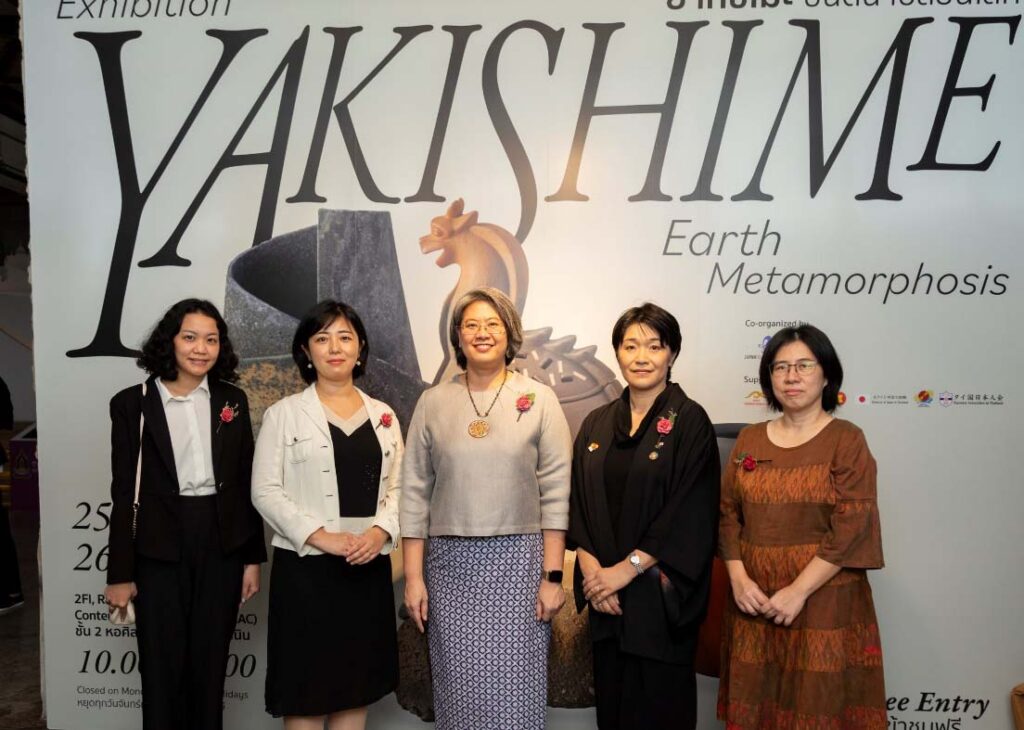

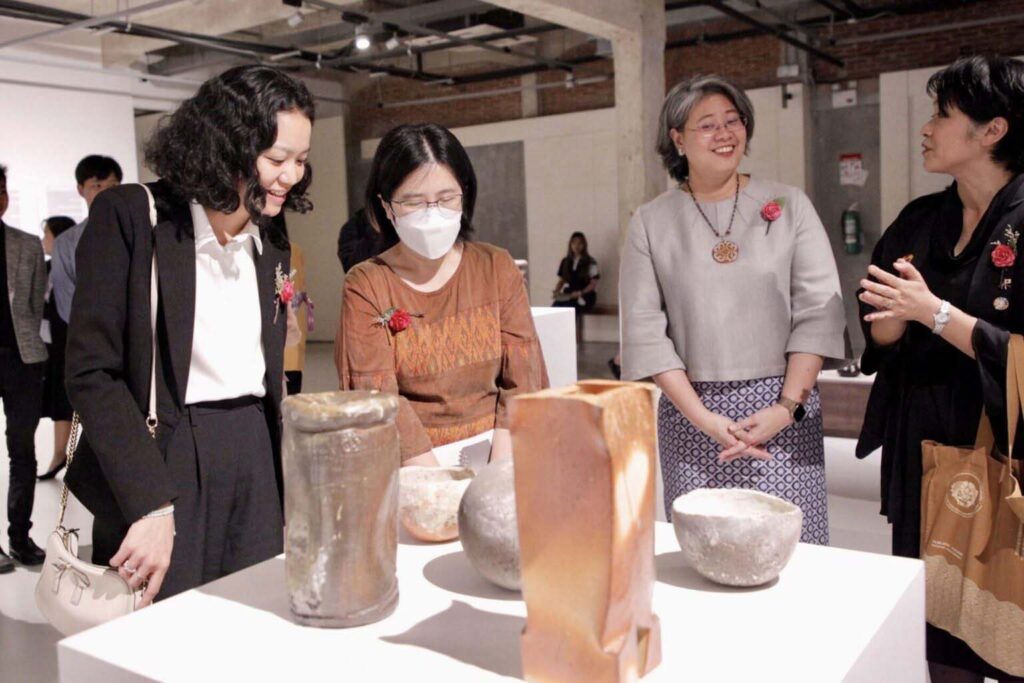
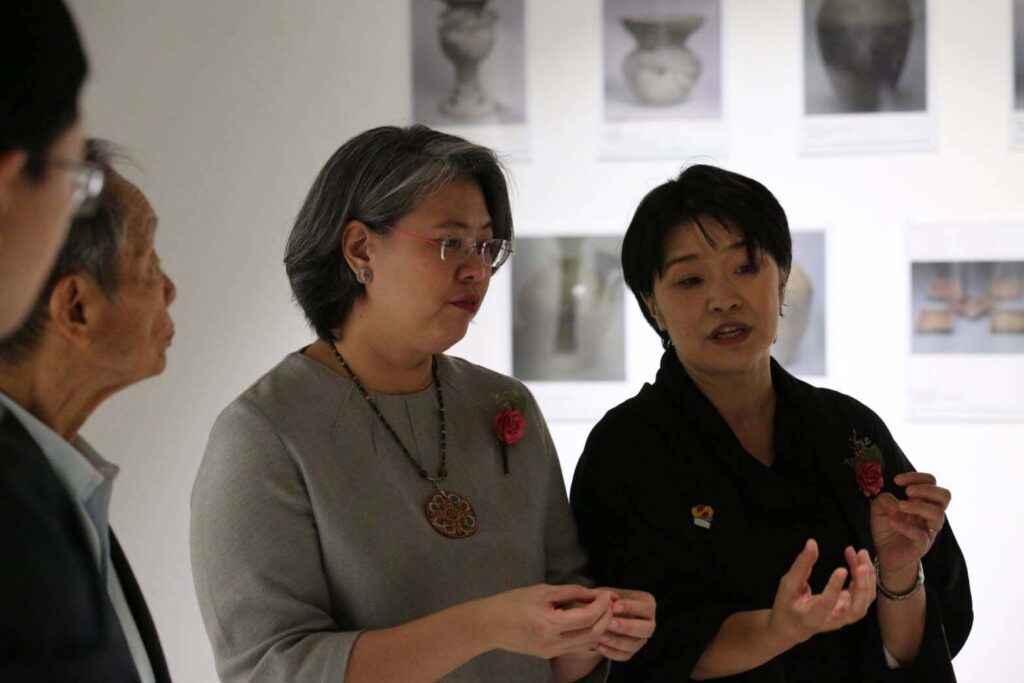
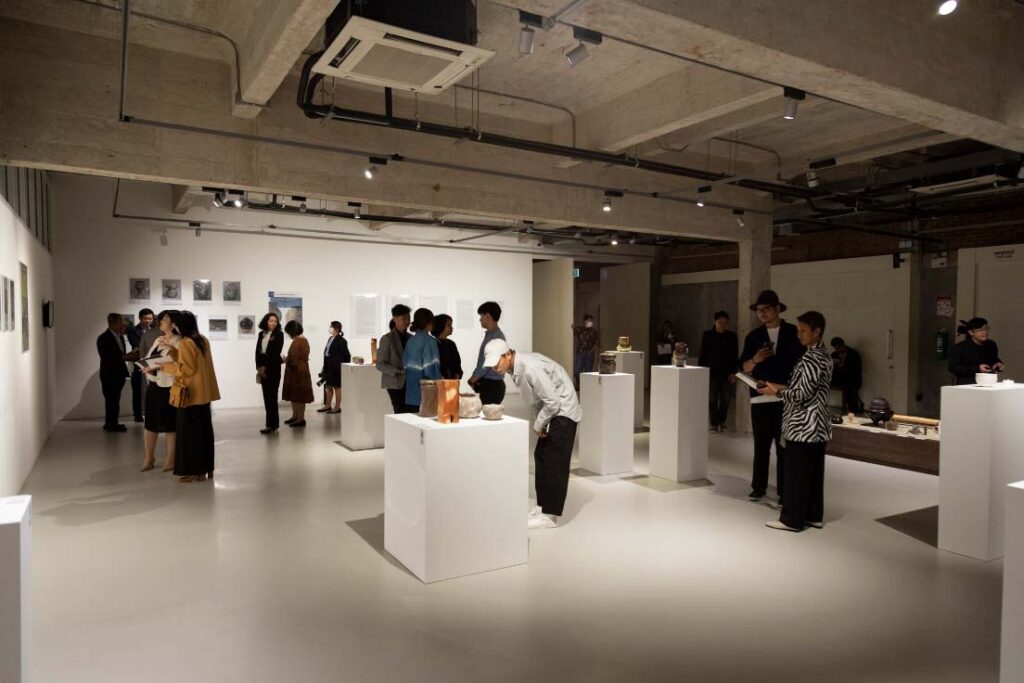
Photos of Installation View
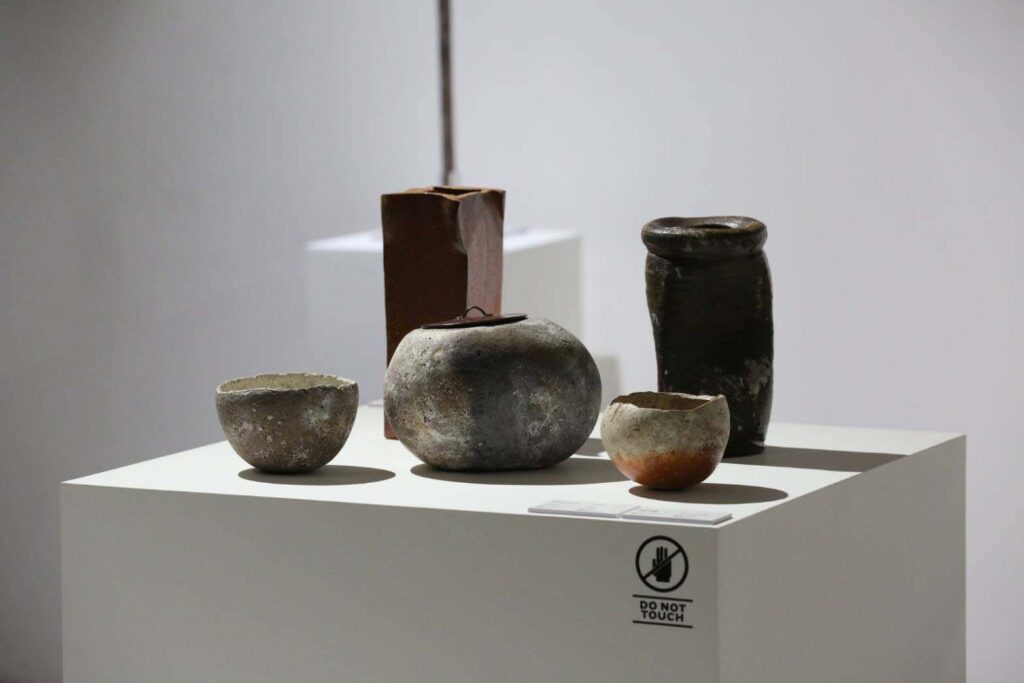
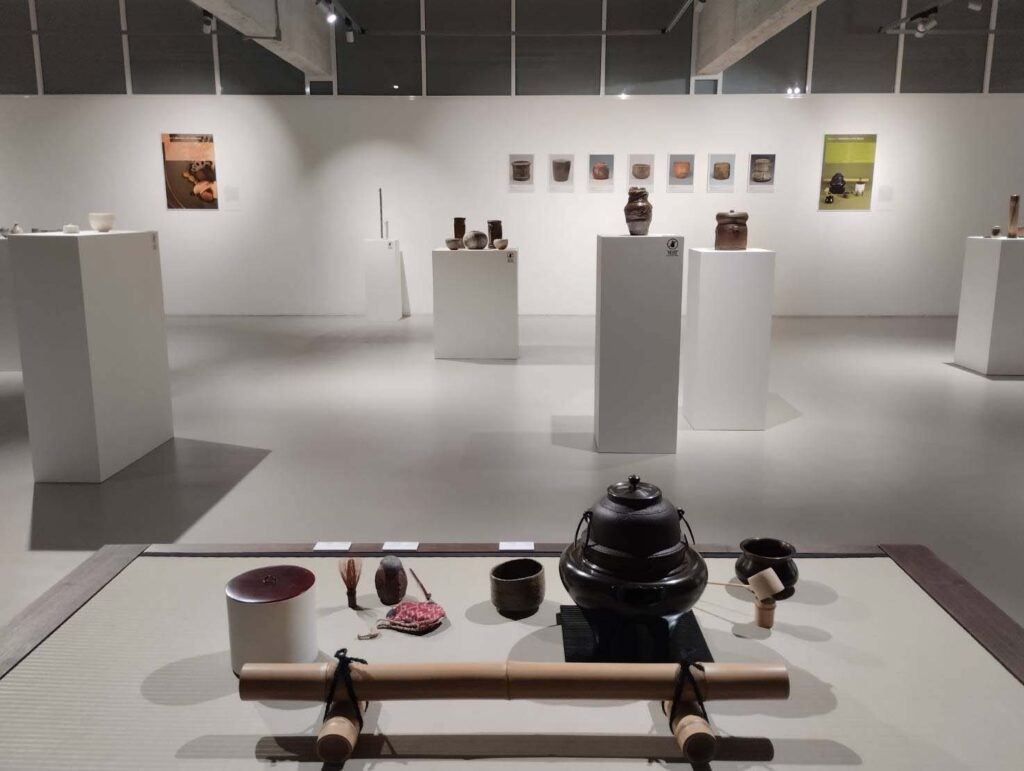
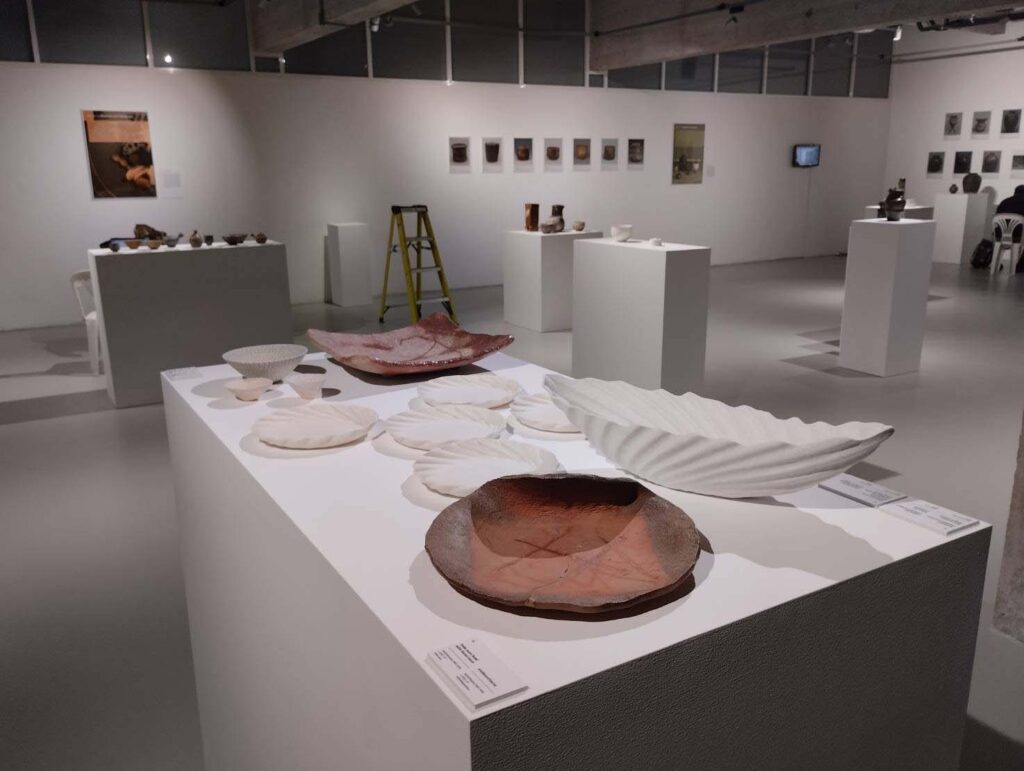
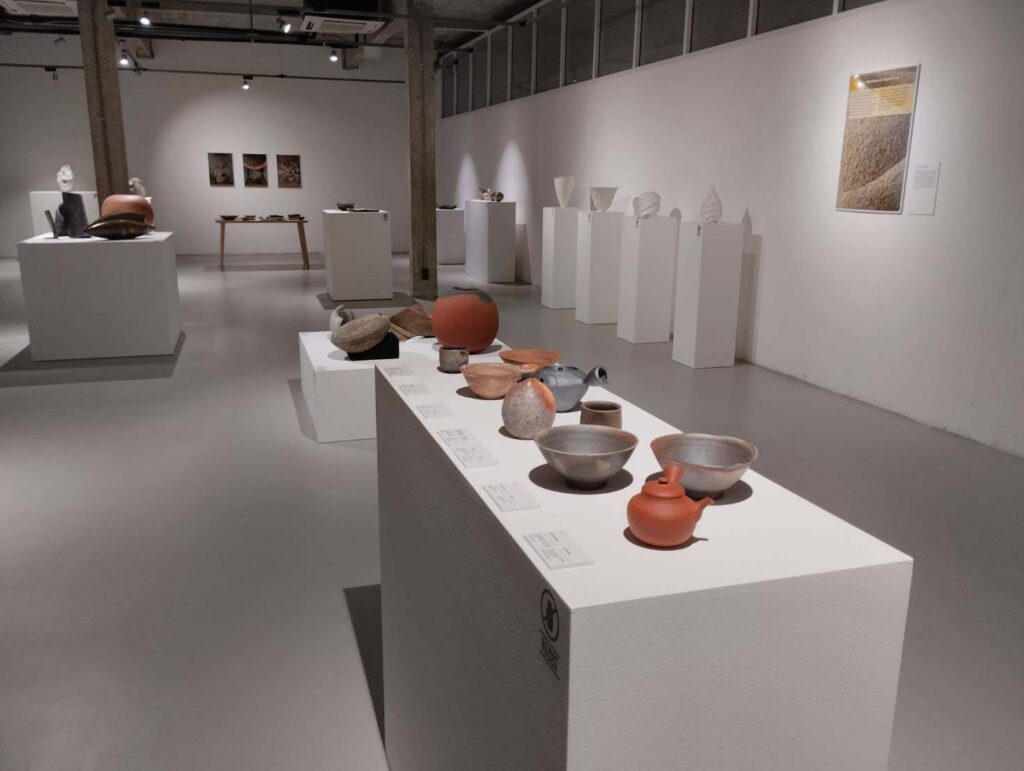
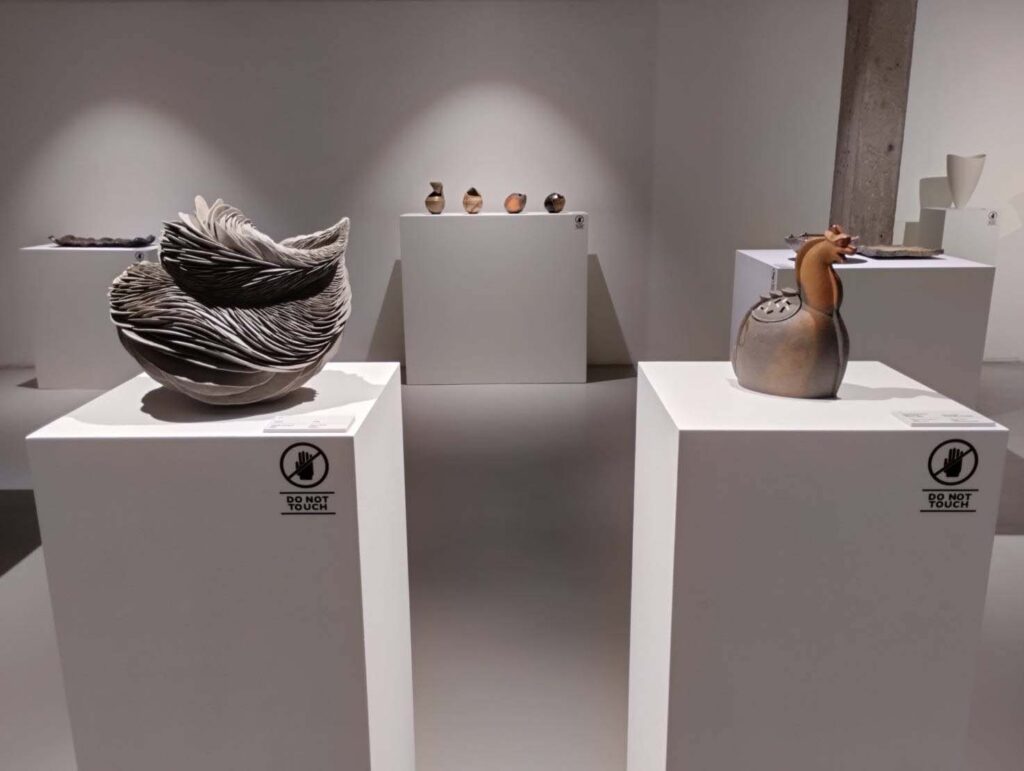
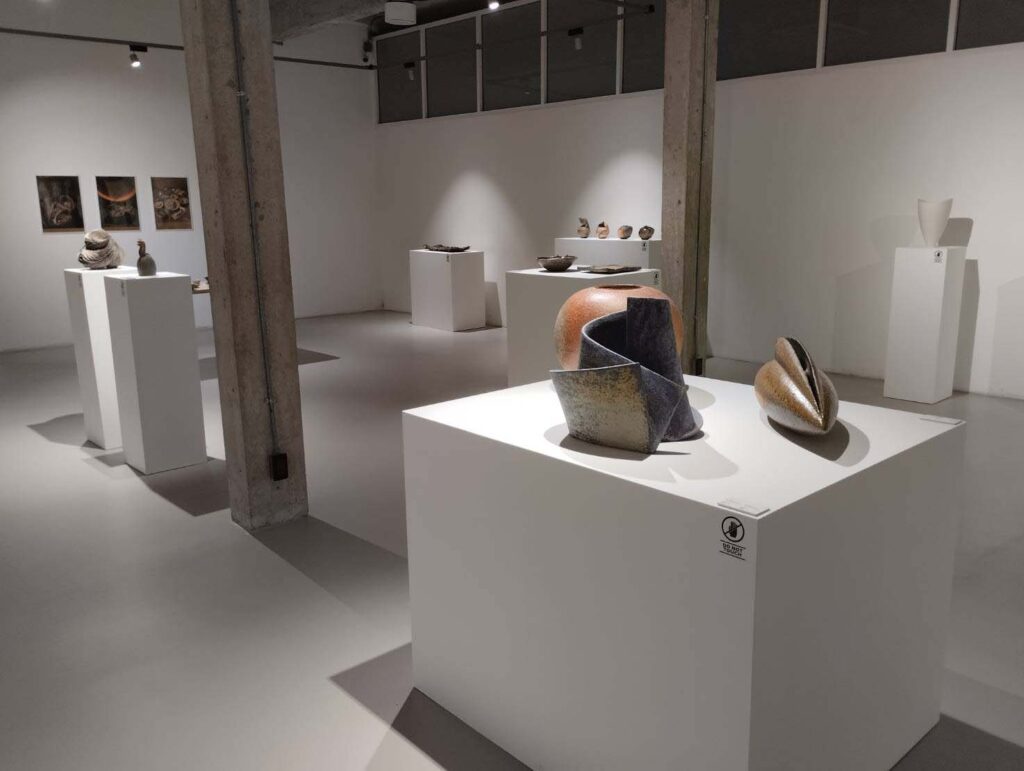

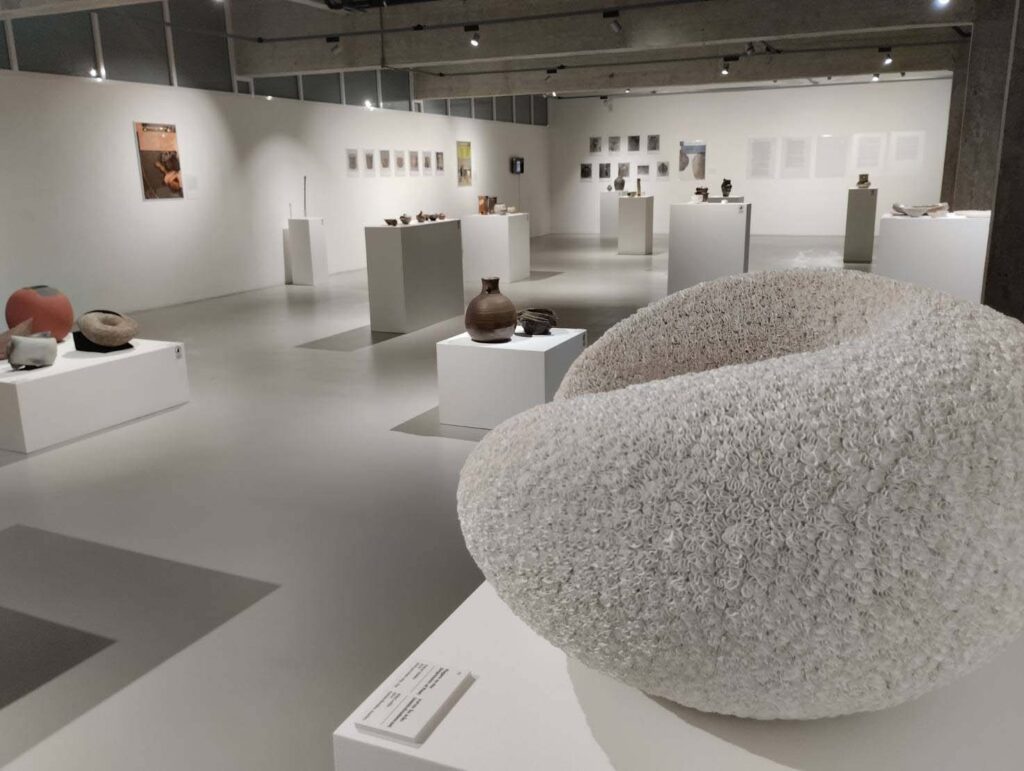
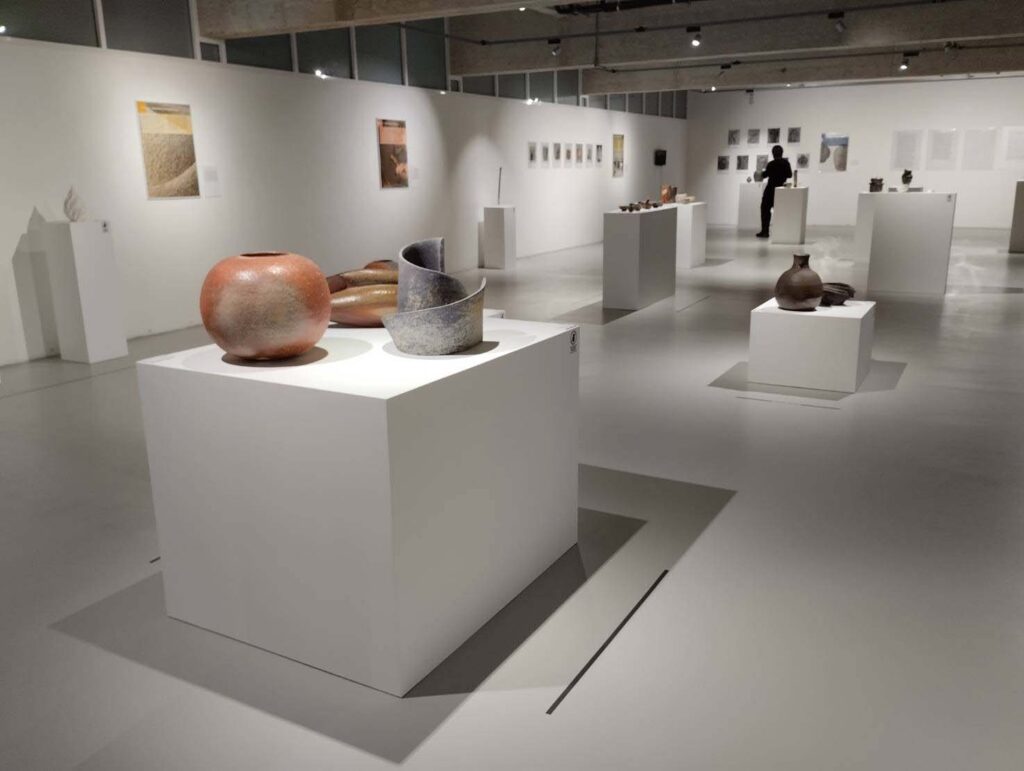
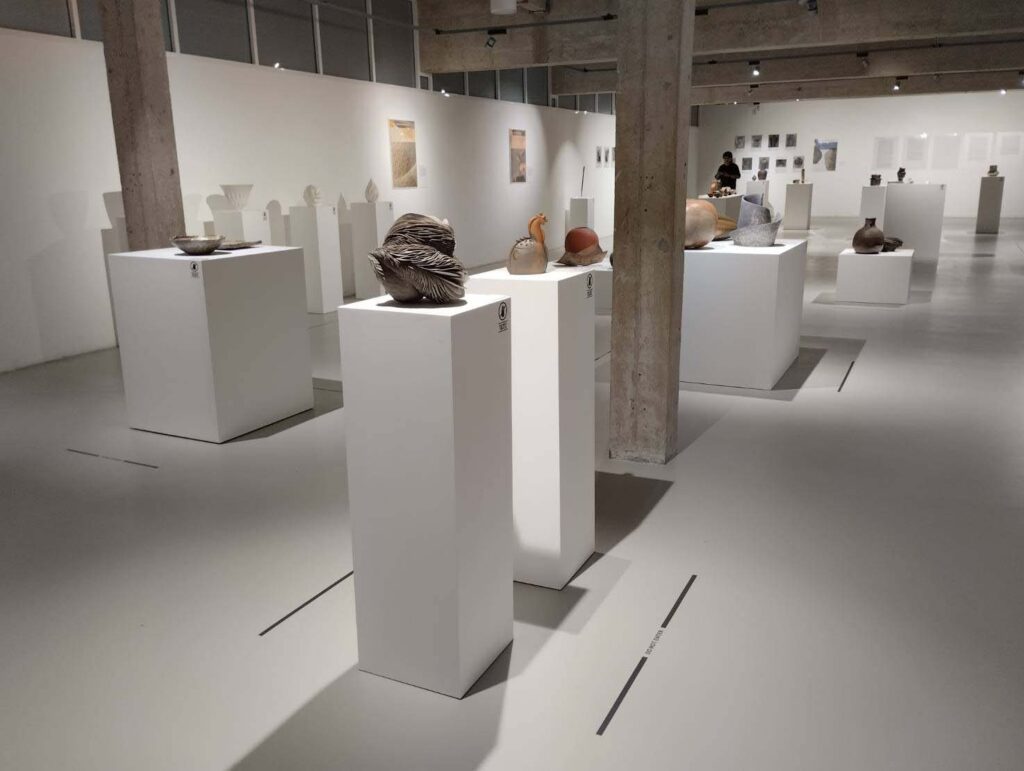
Photos of Opening of the exhibition
Yakishime – Earth Metamorphosis
Friday 6 October 2023
Faculty of Fine and Applied Arts,
Khon Kaen University

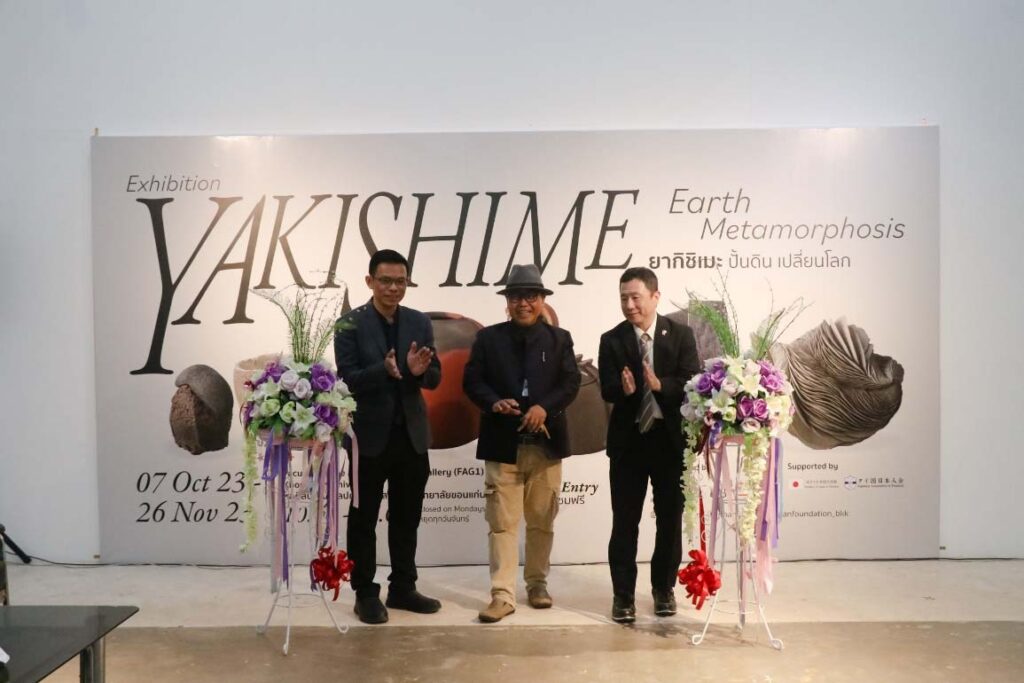
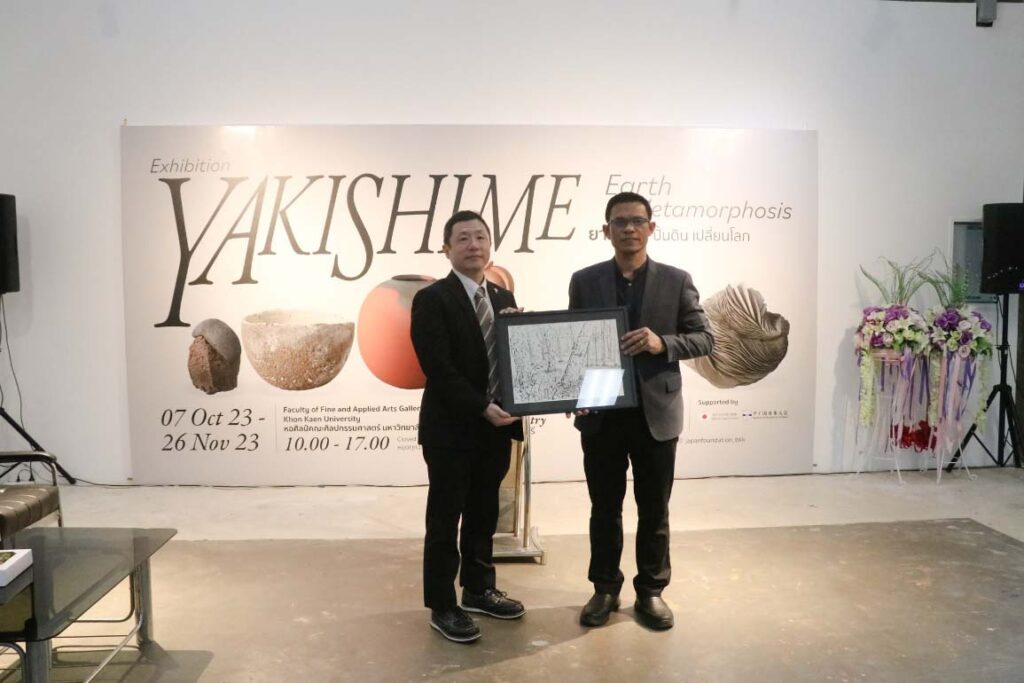
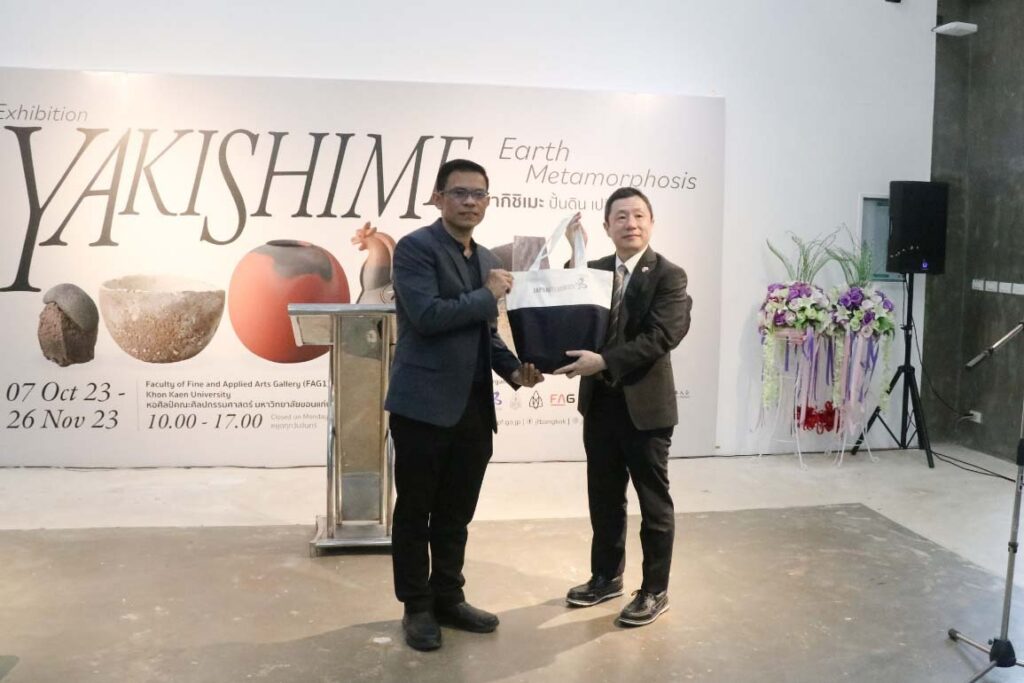
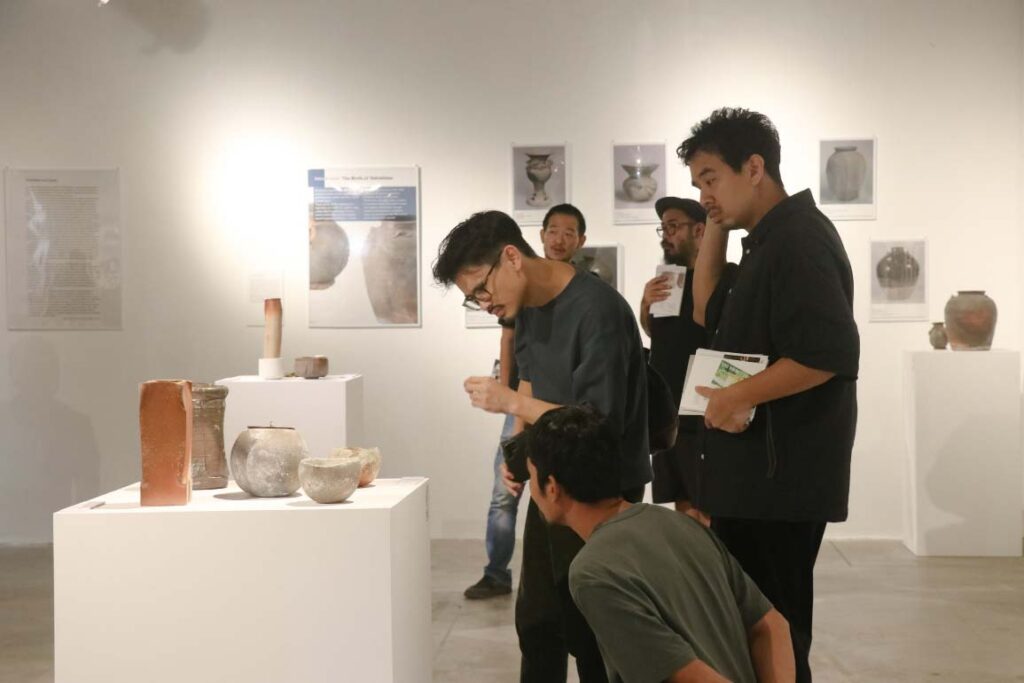
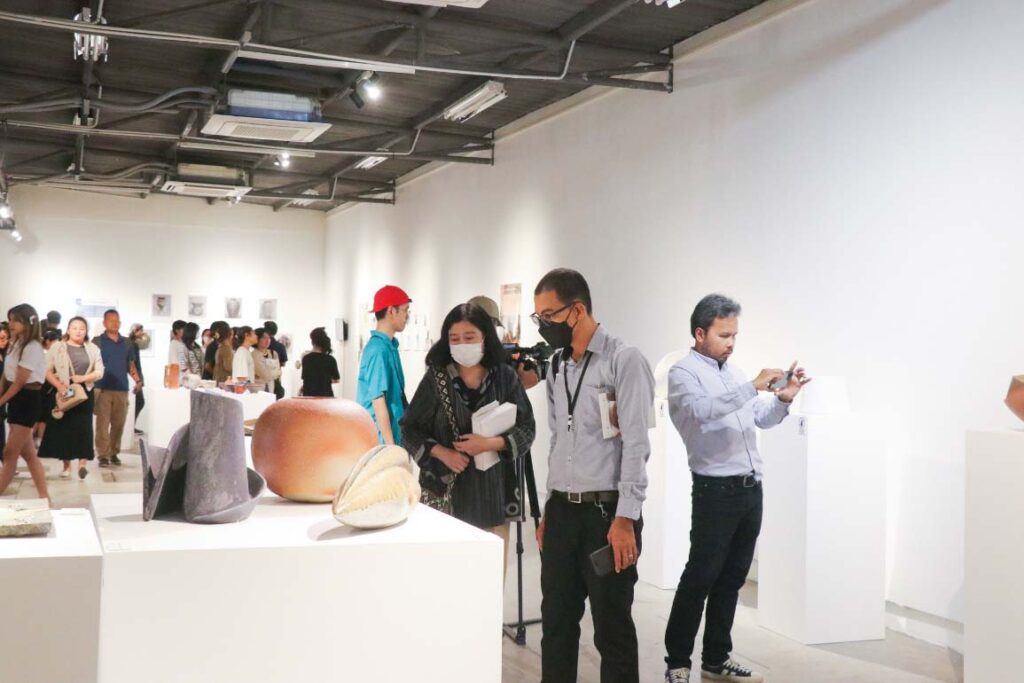
Photo of Installation View

